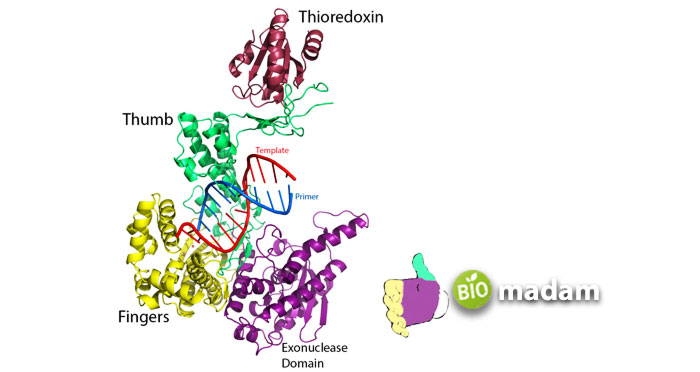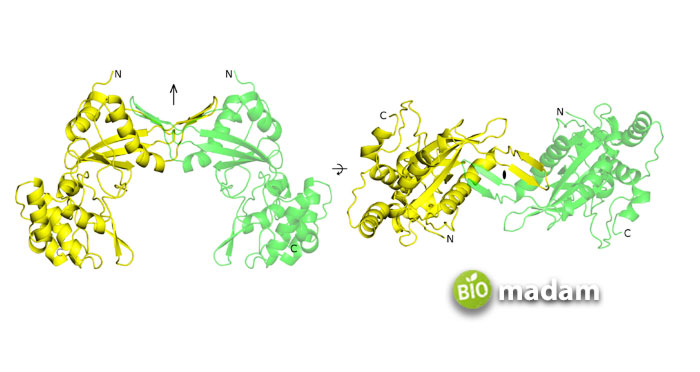Before understanding the difference between exonuclease and endonuclease, know about a nuclease. It is a group of enzymes that function to hydrolyze nucleic acids. Basically, they can dissociate a phosphodiester backbone that interlinks different nucleotides. They are generally categorized into two types, depending upon the mechanism of action and location in the nucleic acid. These are Exonucleases and endonucleases.
The main difference between exonuclease and endonuclease is the point where it divides. As the name indicates, exonuclease splits the bond from the outer ends, whereas endonuclease cleaves the bond inside the polynucleotide chain. Before moving further, let’s glance at its comparison chart below.
Comparison Chart
| Parameters | Exonuclease | Endonuclease |
| Cleavage of Polynucleotide | From Outer Ends | From Inside |
| Vital Role | In Host Defense Mechanism | In Producing Recombinant Molecules |
| Specificity | Non-specific | Specific or non-specific |
| Lag Period | No Lag Period | Occurs Before its Activity |
| Final Results | Individual Nucleosides | Oligonucleotides |
| Nature of Ends | Sticky Ends | Blunt or Sticky Ends |
| Effect on Pathogens | No Effect | Blocks the Entryway for Pathogens |
| Examples | Polymerase-III, Snake and Lizard Venom | DNases, EcoRI, Hind-III, etc. |
Explain Exonuclease
The enzymes that split a DNA sequence from either 5’ or 3’ end of a polynucleotide chain are called exonucleases. These nucleases are essential to prokaryotes, eukaryotes, and archaea by degrading their RNA through the multi-protein exosome, including different exoribonucleases. Moreover, they are also present in the venoms of lizards and snakes, cleaving the DNA sequence of their essential proteins. Exonucleases are crucial in the replication process as they function with the RNA polymerase-II to further replace the transcript with DNA nucleotide.

Furthermore, these enzymes are indulged in the transcription and replication of DNAs. Unlike other enzymes, exonucleases lack a lag period due to cleaving from the outer ends, resulting in nucleosides. Last but not least, they do not have any protective mechanism to stop pathogens from entering the cell.
Explain Endonuclease
The enzymes which split a phosphodiester bond from inside a polynucleotide chain are called endonucleases. Such nucleases can either be specific or non-specific to DNA sequencing. The specific ones are Restriction Endonucleases, obtained from numerous archaea and bacteria. The bond that cleaves from a single-stranded end called the sticky end are further hybridized by DNA ligase. It results in the formation of Recombinant DNA, and the procedure is known as Recombination.
The specific restriction endonucleases are further categorized into three types, depending upon their mechanism of action. These are type I endonucleases, type II endonucleases, and type III endonucleases. The first is substantial multi-subunit complexes involved in cleaving almost 1000 base pairs at random sites. Similarly, type II are smaller units responsible for cleaving the sequences without the aid of ATPs. Last but not least, type III endonucleases function to cleave the sequences of almost 25 base pairs.

Know the Similarities between Exonuclease & Endonuclease
Both exonucleases and endonucleases are types of nuclease (an enzyme), so they have a few similarities too. Let’s have a look at them below!
- Acts on Polynucleotide Chain: Both of these nucleases act on the polynucleotide chain to hydrolyze it.
- Nucleic Acid: The exonuclease and endonuclease deal with the nucleic acid.
- Effects DNA & RNA: They can influence either DNA or types of RNA.
Figure Out the Dissimilarities between Exonuclease & Endonuclease
If you read them in detail, there are numerous dissimilarities between exonuclease and endonuclease. So, let’s move on!
Point of Cleavage
Exonuclease
As the name suggests, these enzymes cleave a bond from the ends.
Endonuclease
On the other hand, such enzymes break a nucleotide arrangement from the inside (middle).
End Products
Exonuclease
The cleavage of DNA sequence by exonuclease results in individual nucleosides or nucleotides.
Endonuclease
In contrast, the cleavage of DNA sequence by endonuclease results in oligonucleotides.
Peculiarity
Exonuclease
As these enzymes divide a bond from the ends, so usually non-peculiar or non-specific.
Endonuclease
On the contrary, endonucleases can be specific or non-specific. The specific ones are restriction endonucleases that cleave some particular sites of a DNA sequence.
Influence of Circular DNA
Exonuclease
Due to being non-specific in nature, exonucleases have more significant activity toward linear DNA and lesser toward circular DNA.
Endonuclease
On the opposite side, the restriction endonucleases specifically cleave a bond within circular DNA.
Nature of Ends
Exonuclease
They form sticky ends that should always remain free for cleavage.
Endonuclease
Unlike exonuclease, these might result in blunt or sticky ends. Moreover, there is no necessity for a polynucleotide chain’s free 3’ or 5’ ends.
Protective Characteristics
Exonuclease
They do not have any protective property because of their non-specific nature.
Endonuclease
They specifically protect a body against pathogenic microorganisms’ entrance, e.g., viruses and bacteria.
Common Examples
Exonuclease
Common examples include Exonuclease-I, snake/lizard venom, Xrn1, etc.
Endonuclease
Some common examples of endonuclease are Deoxyribonuclease-I, BamHI, EcoRI, etc.
Conclusion
Both nucleases have a significant role in genetics, as we have discussed above. The main difference between exonuclease and endonuclease lies in its location and functioning. Exonucleases discharge the heterochromatin portion to maintain the uprightness of DNA. On the other hand, the cleavage by endonuclease from the middle protects nucleic acid from harmful particles. Furthermore, they are broadly used in genetic engineering, PCR, recombinant DNA technology, diagnostics and gene editing, etc.

Hello, I would like to introduce myself to you! I am Chelsea Rogers, an experienced blog writer for science articles, holding an MPhil degree. My enthusiasm to grab the best knowledge, let it relate to botany, zoology, or any other science branch. Read my articles & let me wait for your words s in the comment section.

